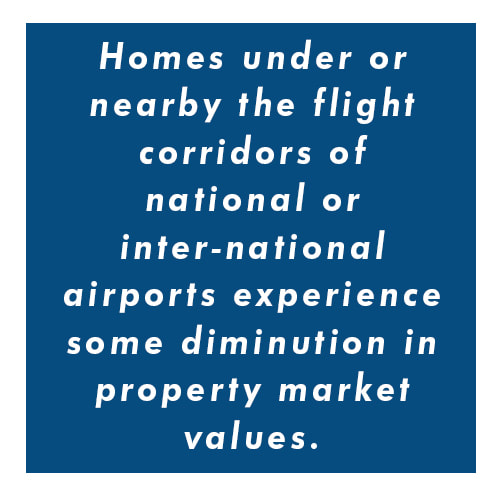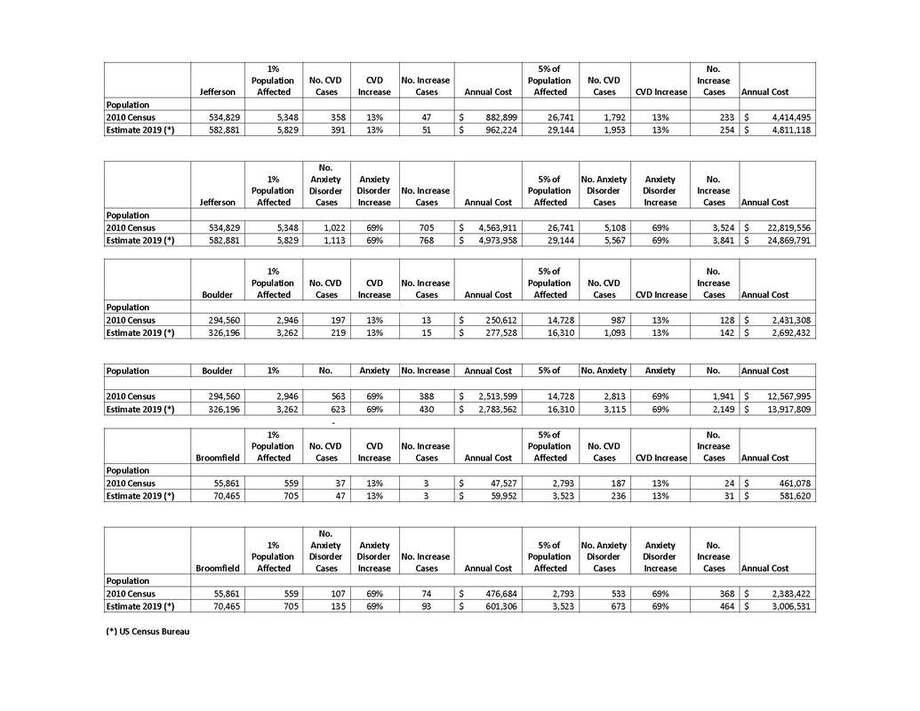Economic Impact of Training School Flights
Please consider the true cost of the flight schools at RMMA and other regional airports. When it comes to money, we have heard only about the so-called “economic benefit” of the airport to this region. RMMA receives a substantial portion of its income from multiple flight schools. Instead of landing fees, the income is derived primarily from the sale of AV gas which is a lead-based fuel. This “fee” arrangement encourages the destructive pattern of flying low, and making repeated touch and go passes over our homes and schools.
|
|
There is another side of the economic question that has never been explored, i.e., what is the true cost of airport activity to the surrounding community? This analysis is essential to bring balance and fairness to the development of RMMA.
In addition to “fees” and “jobs” that we hear so much about, there are many other critical factors to consider. Any fair economic analysis of RMMA would list these costs, alongside the income, to determine the true economic impact of RMMA on the community. |
Community members regularly hear about the beneficial economic effect, in terms of jobs and revenue generated, of small airports for the local community. But missing from such an analysis is a measure of the cost to the surrounding communities for these operations. While there are many such factors (deteriorating property values, negative impacts on health and learning, reduction in the quality of life, etc.), this communication will focus on the well documented costs of two medical conditions in communities that bear the noise impacts of airports.
Negative Impact on Property Values
Negative impact of noise and pollution from the airport on the property values of surrounding communities. Keep in mind that most of our homes were built long before the recent expansion of the airport that has created problems with noise, safety and pollution. And there was no communication about these plans from public officials who govern those decisions to those of us who have been negatively affected. We are left with the loss of value on the most important investment that most of us have.
NextGen Cost EstimatesThe Next Generation Air Transportation System (NextGen) is the FAA’s multibillion-dollar
program to modernize the U.S. National Airspace System (NAS). This will change routes for commercial traffic and many communities that have never experienced airport noise will now be subjected to it. This study projected noise would cost $800 million in the next 30 years as NextGen is implemented. |
True Cost of Noise on Surrounding CommunitiesTrue cost of health care, remedial learning and loss of productivity from the airport’s expansion. Decades of scientific evidence show that aviation noise adversely affects (1) cardiovascular health, (2) mental health, (3) learning, (4) productivity, and (5) quality of life.
Communities surrounding airports are significantly affected by health care costs associated with noise from these facilities. In fact, the FAA uses estimates published by some of these studies to justify expenditures for noise mitigation in homes and other buildings when airports violate FAA regulations associated with noise. |
|
In general, estimations of health care costs vary by community. However, the following per case applies generally in the US:
The percent of the increase in cases in affected populations is an important part of cost calculations. Reliable estimates are as follows: Cardiovascular Disease: Typical is 6.7% of total population; airport noise causes a 13% increase in cases number. Anxiety Disorder: Typical is 19.1% of total population; airport noise causes a 69% increase in case number. |
Using these numbers to estimate health care costs associated with RMMA for Boulder, Jefferson and Broomfield counties, we estimated the following:
Broomfield County: up to $3.6 M annually Boulder County: up to $16.6 M annually Jefferson County: up to $6 M annually These estimates are the MINIMUM estimates of health care costs associated with airport noise on surrounding communities. Research in the US has just begun on the rise of neurodegenerative disease associated with airport noise is just beginning. Adding the costs of increasing numbers of Alzheimer’s disease, Parkinson’s disease and other similar conditions is in its infancy and reliable estimates of costs are not as well established, so are not included here. |
|
1. Nichol, G.A.; Bell, T.J.; Pedula, K.L.; O'Keeffe-Rosetti, M. Mecdical Costs Among patients with established cardiovascular disease. A.J.Manag.Care, 2010 16, e86-e-93.
2. Marchiniak,M.: Lage, M.; Dunayevich, E.; Russell, J.; Bowman, L.; Landbloom, R.; Levine, L. The Cost of Treating Anxiety: The Medical and Demographic Correlates That Impact Total Medical Costs. Lilly Research Laboratories, 2005. 3. Boshen,J.; Ruggeri, K.; Zafari, Z.; Muennig, P. The Cost-Effectiveness of Lowering Permissible Noise Levels Around U.S. Airports. Intl. J. of Environmental Research and Public Health, December, 2017. |
4. Prevalance of Uncontrolled Risk Factors for Cardiovascular Disease: United States, 1999-2010. C.D.Fryar, M.S.P.H.; T. Chen, Ph.D.; X. Li, M.S. NCHS Data Brief, no. 103,
Hyattsville, MD.:National Center for Health Statistics: 2012. 5. Fryar CD, Chen T-C, Li X. Prevalence of uncontrolled risk factors for cardiovascular disease: United States, 1999–2010 pdf icon[PDF-494K]. NCHS data brief, no. 103. Hyattsville, MD: National Center for Health Statistics; 2012. Accessed May 9, 2019. 6. Harvard Medical School 2007. National Co-Morbidity Survey (NCS). (2017, August 21). |
Negative Impact on Health
These findings should concern you because they offer a glimpse of the actual costs of overflights to the residents of the surrounding communities. These residents are bearing a terrible cost to their health and well-being from the noise generated every day by airport operations.
An additional question related to airport funding also arises from these issues of health and safety. Who pays for the health care required as a result of airport noise? Much of it is public money. According to the US Census Bureau, 33.7% of the population are covered by public health care plans. That means that public money is being used to mitigate the adverse health impact of airport noise and, therefore, should be counted as a source of public funds for these small regional airports. |
Most of the economic information about this airport is opaque to the general public. There is no way to verify, in dollars and cents, that RMMA is an economic benefit to the community. We insist that this analysis become more transparent and that we are allowed to participate. Assigning values to all the factors, including those that have just been covered, is essential to an equitable fiscal evaluation of RMMA.
One Example: Rocky Mountain Metropolitan Airport
Annual Cost Estimate of Increase in Medical Cost Due to Airport Noise
Two Conditions: Cardiovascular Disease and Anxiety Disorder
The studies cited above are published by the National Institutes of Health (NIH) on their website. They were used to determine the cost-effectiveness of mitigation efforts made in residential areas affected by airport noise. Using this data, I made a broad estimate of the noise impact from RMMA on the surrounding communities of Jefferson, Boulder and Broomfield Counties. Although airport noise is known to create many harmful effects for both adults and children, I limited my analysis to two conditions that offer the most quantifiable evidence of both health impacts and cost to local communities: (1) cardiovascular disease (CVD) and (2) anxiety disorder.
Assumptions
Population: data was used from the US Census to calculate the population of these counties. Census data is available from the 2010 census. The Census Bureau also provides an estimate of the population as of July, 2019. Both were used in this analysis.
The impact of RMMA was estimated for both 1% and 5% of each county’s populations. The estimates of 1% and 5% are well supported by the findings of a survey conducted in September 2019 by the city of Louisville. Residents from that city, as well as other surrounding communities, were asked about the impact of RMMA operations on their quality of life. Over 68% described aircraft noise as a concern with 76.3% of those respondents ranking it a “4” or “5” on a scale of concern where 1 is lowest to 5 is highest. Cardiovascular Disease (CVD): Estimates used were provided by the American Heart Association (and published by the NIH) to estimate the current number of CVD cases among 1% or 5% of affected populations in each county. Using the studies cited above, the impact of a 13% increase in CVD cases for each county and the associated cost of that increase ($18,953 annually per case). |
Anxiety Disorder (AD): Estimates were used that were provided by the National Institute for Mental Health (and published by the NIH) to estimate the current number of anxiety disorder cases among 1% or 5% of affected populations in each county. Then, using the studies cited above, I followed the impact of a 69% increase in anxiety disorder cases in affected populations for each county and the associated cost of that increase ($6,475 annually per case).
Results
A summary of the results of my analysis is shown in the tables below. Table 1 shows the annual cost if 1% of the population is affected. Table 2 shows the annual cost if 5% of the population is affected. The summary tables that follow show the combined annual costs of health care for residents of both Jefferson and Boulder counties. These findings should give any responsible official pause:
Jefferson County: Annual Costs range from $5.4 Million to $29.6 Million Annually Boulder County: Annual Costs range from $2.8 Million to $16.6 Million Annually These estimates are for two health conditions. No other costs of the detrimental effects of RMMA on residents are included in this analysis. |
|
1. Nichol, G.A.; Bell, T.J.; Pedula, K.L.; O'Keeffe-Rosetti, M. Mecdical Costs Among patients with established cardiovascular disease. A.J.Manag.Care, 2010 16, e86-e-93.
2.Marchiniak,M.: Lage, M.; Dunayevich, E.; Russell, J.; Bowman, L.; Landbloom, R.; Levine, L. The Cost of Treating Anxiety: The Medical and Demographic Correlates That Impact Total Medical Costs. Lilly Research Laboratories, 2005. 3.Boshen,J.; Ruggeri, K.; Zafari, Z.; Muennig, P. The Cost-Effectiveness of Lowering Permissible Noise Levels Around U.S. Airports. Intl. J. of Environmental Research and Public Health, December, 2017. |
4. Prevalance of Uncontrolled Risk Factors for Cardiovascular Disease: United States, 1999-2010. C.D.Fryar, M.S.P.H.; T. Chen, Ph.D.; X. Li, M.S. NCHS Data Brief, no. 103, Hyattsville, MD.:National Center for Health Statistics: 2012.
Fryar CD, Chen T-C, Li X. Prevalence of uncontrolled risk factors for cardiovascular disease: United States, 1999–2010 pdf icon[PDF-494K]. NCHS data brief, no. 103. Hyattsville, MD: National Center for Health Statistics; 2012. Accessed May 9, 2019. 5. Harvard Medical School 2007. National Co-Morbidity Survey (NCS). (2017, August 21). |




